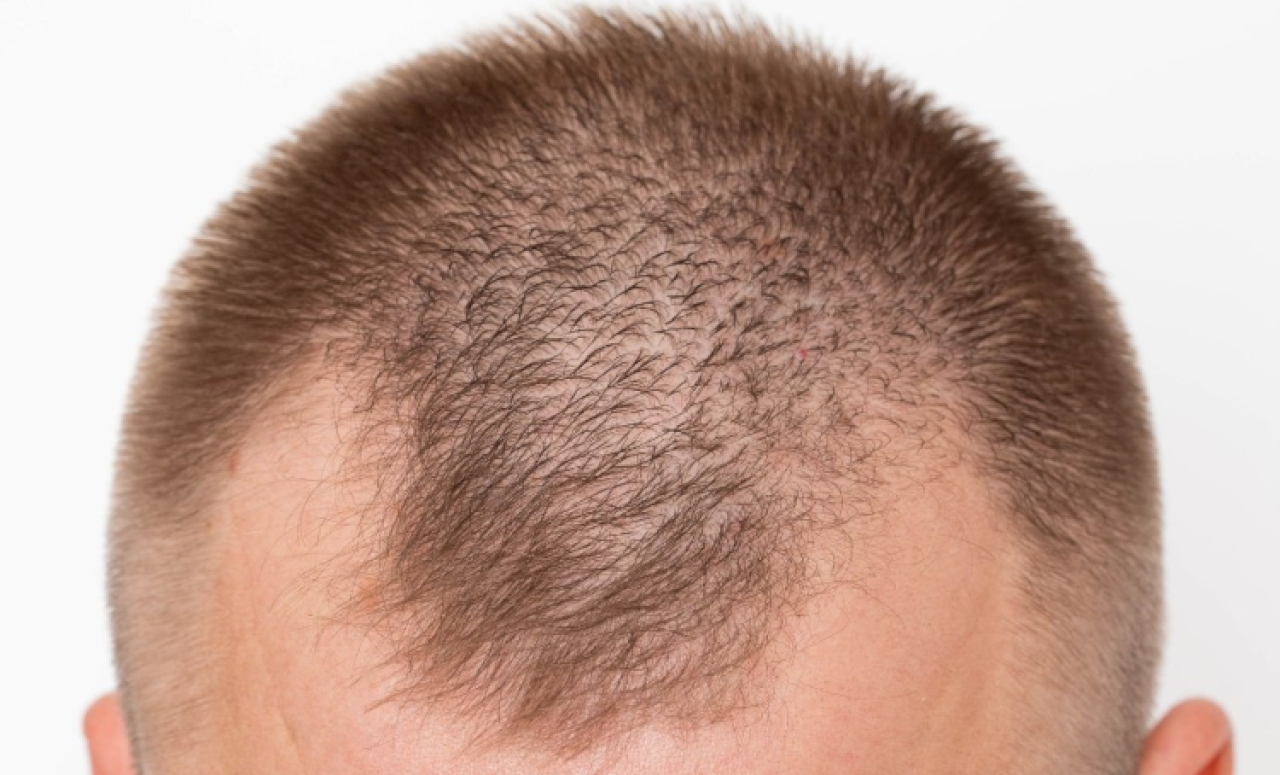In this blog post, we will discuss the causes of female hair loss and how hair transplants can benefit women. We will also cover the different techniques used for female hair transplants, as well as important preparation and aftercare tips for a successful procedure. Additionally, we'll provide guidance on choosing the right hair transplant clinic for women.
Causes of Female Hair Loss
Hair loss is a common concern that affects both men and women. While hair loss in men is often attributed to genetic factors, women can experience hair loss due to a variety of reasons. Female hair loss can have a profound impact on self-esteem and confidence. Here, we will explore the causes of female hair loss, shedding light on the factors that can contribute to this condition.
Hormonal Imbalances
Hormonal imbalances can lead to hair loss in women. Fluctuations in hormones during pregnancy, menopause, or conditions like polycystic ovary syndrome (PCOS) can disrupt the hair growth cycle and result in excessive shedding. Understanding and addressing these hormonal imbalances can help in restoring hair growth.
Genetics
Just like men, women can also inherit genes that make them more susceptible to hair loss. Female pattern baldness, also known as androgenetic alopecia, is a hereditary condition that causes gradual thinning of hair on the scalp. Hair transplants can provide a permanent solution for women with genetic hair loss.
Stress and Trauma
Experiencing significant emotional or physical stress can trigger hair loss in women. This condition, known as telogen effluvium, leads to excessive shedding as the hair follicles enter a resting phase. Hair transplants can be an effective option for restoring hair growth after periods of stress or trauma.
Medical Conditions and Treatments
Certain medical conditions like thyroid disorders, autoimmune diseases, and scalp infections can contribute to hair loss in women. Additionally, treatments like chemotherapy for cancer can result in temporary or permanent hair loss. Hair transplants can help women regain their hair density and confidence after such medical challenges.
Hairstyling and Hair Care Practices
Frequent use of harsh styling tools, tight hairstyles, chemical treatments, and improper hair care practices can damage the hair follicles and lead to hair loss in women. Adopting gentle hair care routines and opting for hair transplants can help women restore their hair health and appearance.
Nutritional Deficiencies
Inadequate intake of essential nutrients, such as iron, zinc, biotin, and vitamins, can contribute to hair loss in women. Ensuring a balanced diet and addressing any nutritional deficiencies can support healthy hair growth. Hair transplants can complement these efforts by providing a fuller and more voluminous head of hair.
The Benefits of Hair Transplants for Women
Hair transplants offer women a transformative solution to combat hair loss and its associated challenges. Restoring confidence and beauty, they come with a host of benefits that extend beyond aesthetics. Here's a list of numerous advantages of hair transplants for women.
Boosts Self-Esteem and Confidence: Regaining a full head of hair can significantly boost a woman's self-confidence and self-image.
Natural-Looking Results: Modern hair transplant techniques create results that are indistinguishable from natural hair, ensuring a seamless appearance.
Long-Term Solution: Hair transplants provide a lasting solution, reducing the need for constant maintenance or temporary fixes.
Styling Options: Restored hair allows for a variety of styling choices, from short cuts to long, flowing locks.
Age-Reversal Effect: A fuller head of hair can take years off one's appearance, making women look and feel younger.
Different Hair Transplant Techniques for Women
Women facing hair loss have a variety of hair transplant techniques at their disposal, each tailored to their unique needs. Understanding the different methods is crucial for choosing the most suitable option. In this section, we delve into the various hair transplant techniques available for women.
Follicular Unit Extraction (FUE)
Follicular Unit Extraction (FUE) is a popular hair transplant technique for both men and women. During an FUE procedure, individual hair follicles are extracted from the donor area (typically the back or sides of the scalp) using a micro-punch tool. These follicles are then carefully transplanted into the recipient area, creating a natural and seamless hairline. FUE offers minimal scarring, faster healing time, and the ability to harvest hair from various parts of the body, making it a versatile option for women.
Follicular Unit Transplantation (FUT)
Follicular Unit Transplantation (FUT), also known as strip harvesting, is another technique commonly used in hair restoration procedures. With FUT, a strip of skin containing hair follicles is surgically removed from the donor area. The hair follicles are then carefully dissected and transplanted into the recipient area. FUT allows for the transplantation of a larger number of grafts in a single session, making it suitable for women with extensive hair loss. However, it does leave a linear scar, which can be concealed by surrounding hair.
Direct Hair Implantation (DHI)
Direct Hair Implantation (DHI) is a technique that combines elements of FUE and FUT. With DHI, the hair follicles are extracted one by one using a specialized pen-like instrument. These follicles are then immediately implanted into the recipient area without the need for creating incisions or channels beforehand. DHI offers precise control over the angle, depth, and direction of each implanted hair follicle, resulting in a natural-looking hairline. This technique also minimizes the risk of damage to the transplanted follicles and allows for faster healing.
Robotic Hair Transplant
Robotic hair transplant is an advanced technique that utilizes robotic technology to assist in the hair transplant process. During this procedure, a robotic arm with artificial intelligence identifies and extracts individual hair follicles from the donor area. The extracted follicles are then transplanted into the recipient area by the surgeon. Robotic hair transplant offers precise and consistent graft placement, reducing human error and providing excellent results. It is a suitable option for women who want a highly accurate and efficient hair restoration procedure.
Platelet-Rich Plasma (PRP) Therapy
Platelet-Rich Plasma (PRP) therapy is a non-surgical hair restoration technique that can be used in conjunction with hair transplant procedures or as a standalone treatment. PRP involves extracting the patient's blood, processing it to concentrate the platelets, and injecting the platelet-rich plasma into the scalp. PRP therapy stimulates hair growth by promoting cell regeneration and improving blood supply to the hair follicles. It can enhance the results of a hair transplant and promote hair growth in areas with thinning hair.
Preparing for a Hair Transplant Procedure
Preparing for a hair transplant procedure is a critical phase that significantly influences the success of the surgery and your overall experience. To ensure the best possible outcome, it's important to take certain steps and follow specific guidelines before undergoing the procedure. Here are the essential aspects of preparing for a hair transplant.
- Consultation with a Hair Transplant Specialist- Begin by selecting an experienced and board-certified hair transplant specialist. Schedule a consultation to discuss your goals, assess your candidacy, and create a personalized treatment plan.
When considering a hair transplant procedure, Dr. Adriana Gómez Hair Transplantation stands out as an excellent choice. With a stellar reputation and a dedicated team of experts, they are committed to providing top-notch care and results. Her extensive experience in female hair restoration, a range of advanced techniques, and a strong focus on patient safety and satisfaction make her a standout choice for women seeking hair transplant solutions.
- Understanding the Procedure- Take the time to educate yourself about the chosen hair transplant technique. Understand what to expect, including potential results, risks, and benefits, to establish realistic expectations.
- Medical Evaluation- Undergo a comprehensive medical evaluation to ensure your overall health is suitable for the procedure. This may involve blood tests and a review of any pre-existing medical conditions.
- Medication and Lifestyle Adjustments- Consult with your surgeon to determine if any current medications or supplements need to be adjusted or discontinued before the procedure. Consider making lifestyle changes such as abstaining from alcohol and smoking in the weeks leading up to the procedure, as these habits can impact the healing process.
Recovery and Aftercare for Female Hair Transplants
The recovery and aftercare process is crucial for the success and optimal results of a female hair transplant procedure. It is important for women to follow specific guidelines to ensure proper healing and promote healthy hair growth.
Immediately after the procedure, there may be some swelling, redness, and minor discomfort, but these symptoms typically subside within a few days. It's crucial to follow your surgeon's post-operative instructions meticulously, including any prescribed medications and the recommended cleaning regimen for your scalp. Avoid any strenuous physical activity and exposure to direct sunlight during the initial healing period.
During the recovery period, it's essential to protect your newly transplanted hair and maintain a gentle and consistent hair care routine. Regular follow-up appointments with your surgeon will be scheduled to monitor progress and address any concerns or questions you may have.
In conclusion
Hair loss is a common and distressing condition for women. However, with advancements in hair transplant techniques, women now have effective solutions to combat hair loss and regain their confidence and beauty.
From addressing hormonal imbalances to choosing the right hair transplant clinic, there are numerous options available to help women achieve a fuller head of hair. By understanding the various techniques and preparing adequately for the procedure, women can experience the transformative benefits of hair transplants.






